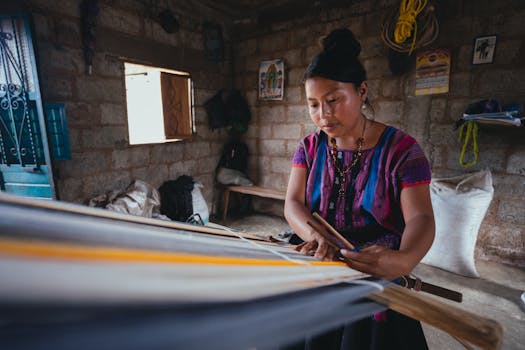
Connecting Cultures: The Story Behind Africa’s Diverse Fiber Traditions – WordPress
Connecting Cultures: The Story Behind Africa’s Diverse Fiber Traditions is a fascinating topic that showcases the rich cultural heritage of the African continent. African fiber traditions, such as weaving, dyeing, and embroidery, have been an integral part of the continent’s cultural identity for centuries. These traditions not only reflect the diversity and complexity of African cultures but also serve as a means of communication, storytelling, and community building.
African fiber traditions are as diverse as the continent itself, with each region and ethnic group having its unique techniques, materials, and meanings. From the vibrant kente cloth of Ghana to the intricate embroidery of Moroccan textiles, each tradition has its own distinct character and significance. These traditions are not just about creating beautiful fabrics but also about conveying messages, telling stories, and preserving cultural heritage.
The Significance of Fiber Traditions in African Cultures
Fiber traditions in Africa are deeply rooted in the continent’s cultural, social, and economic fabric. They play a significant role in various aspects of African life, including spirituality, rituals, and everyday life. For example, in many African cultures, textiles are used in initiation ceremonies, weddings, and funerals, serving as a means of communicating with the divine, honoring ancestors, and marking important life transitions.
In addition to their spiritual and cultural significance, fiber traditions also have economic importance. Many African communities rely on textile production as a source of income, with women often being the primary producers. The production and trade of textiles also contribute to the local economy, providing employment opportunities and generating revenue.
Regional Fiber Traditions in Africa
Africa is home to a wide range of fiber traditions, each with its unique characteristics and significance. Some of the most notable regional traditions include:
The kente cloth of Ghana, known for its vibrant colors and geometric patterns, is a symbol of African cultural identity and pride. The adire cloth of Nigeria, with its intricate tie-dye designs, is a testament to the creativity and ingenuity of African textile artists. The bogolanfini cloth of Mali, with its mud-dyed patterns, is a reflection of the country’s rich cultural heritage and its connection to the natural environment.
These regional traditions are not only beautiful but also carry deep cultural meanings. They are often used to convey messages, tell stories, and preserve cultural heritage. For example, the kente cloth is used to communicate messages about wisdom, strength, and community, while the adire cloth is used to tell stories about love, beauty, and nature.
Promoting Cultural Exchange and Understanding
African fiber traditions have the power to bring people together, promote cultural exchange, and foster understanding. By learning about and appreciating these traditions, we can gain a deeper understanding of African cultures and their significance in the global context.
WordPress, as a platform, provides a unique opportunity to share and showcase African fiber traditions, promoting cultural exchange and understanding. Through blogging, social media, and online communities, we can connect with people from diverse backgrounds, share our experiences, and learn from each other.
By embracing African fiber traditions, we can also promote cultural diversity, creativity, and innovation. We can learn from the techniques, materials, and meanings behind these traditions, and apply them to our own creative pursuits, whether it be fashion, art, or design.


